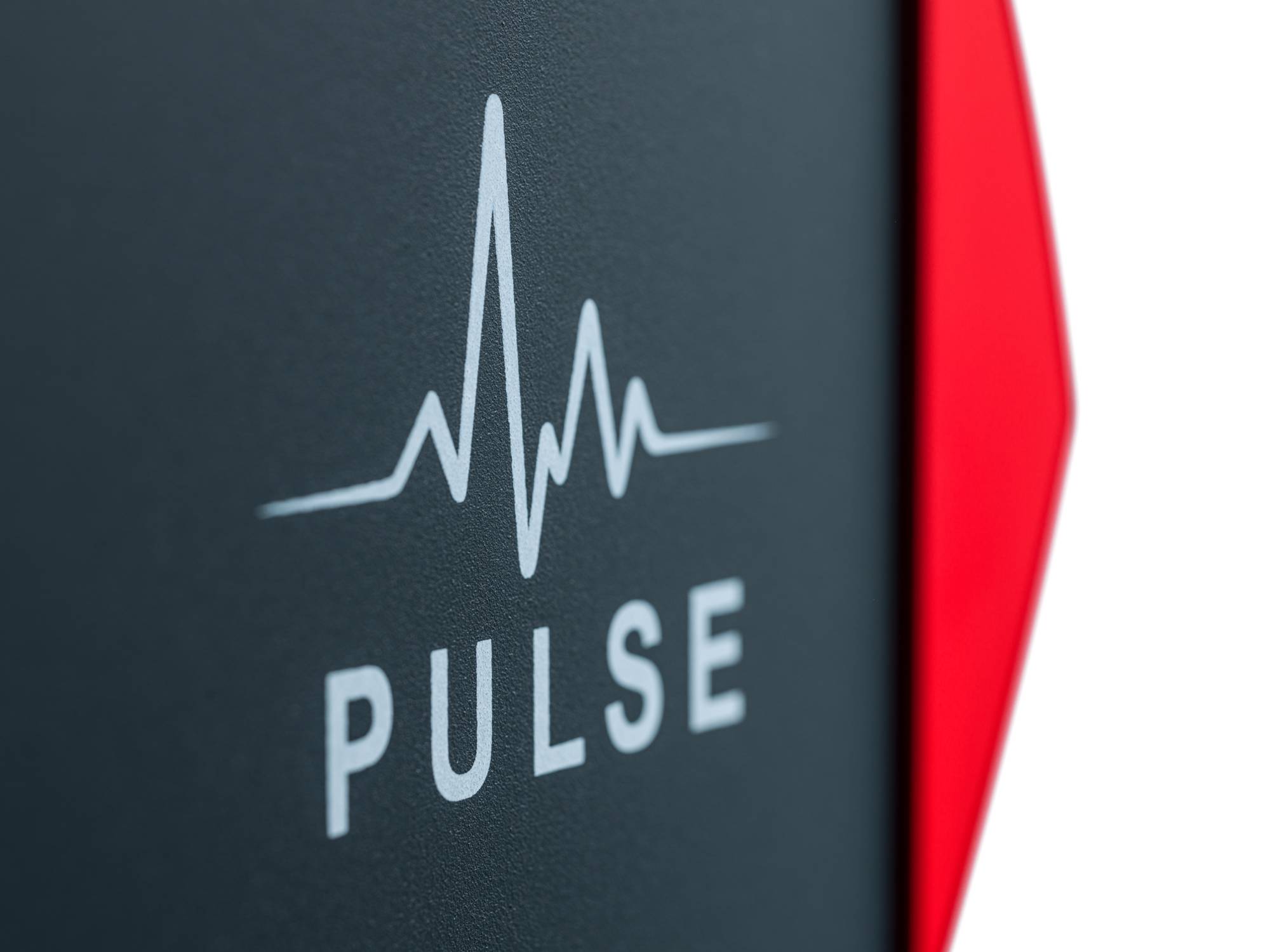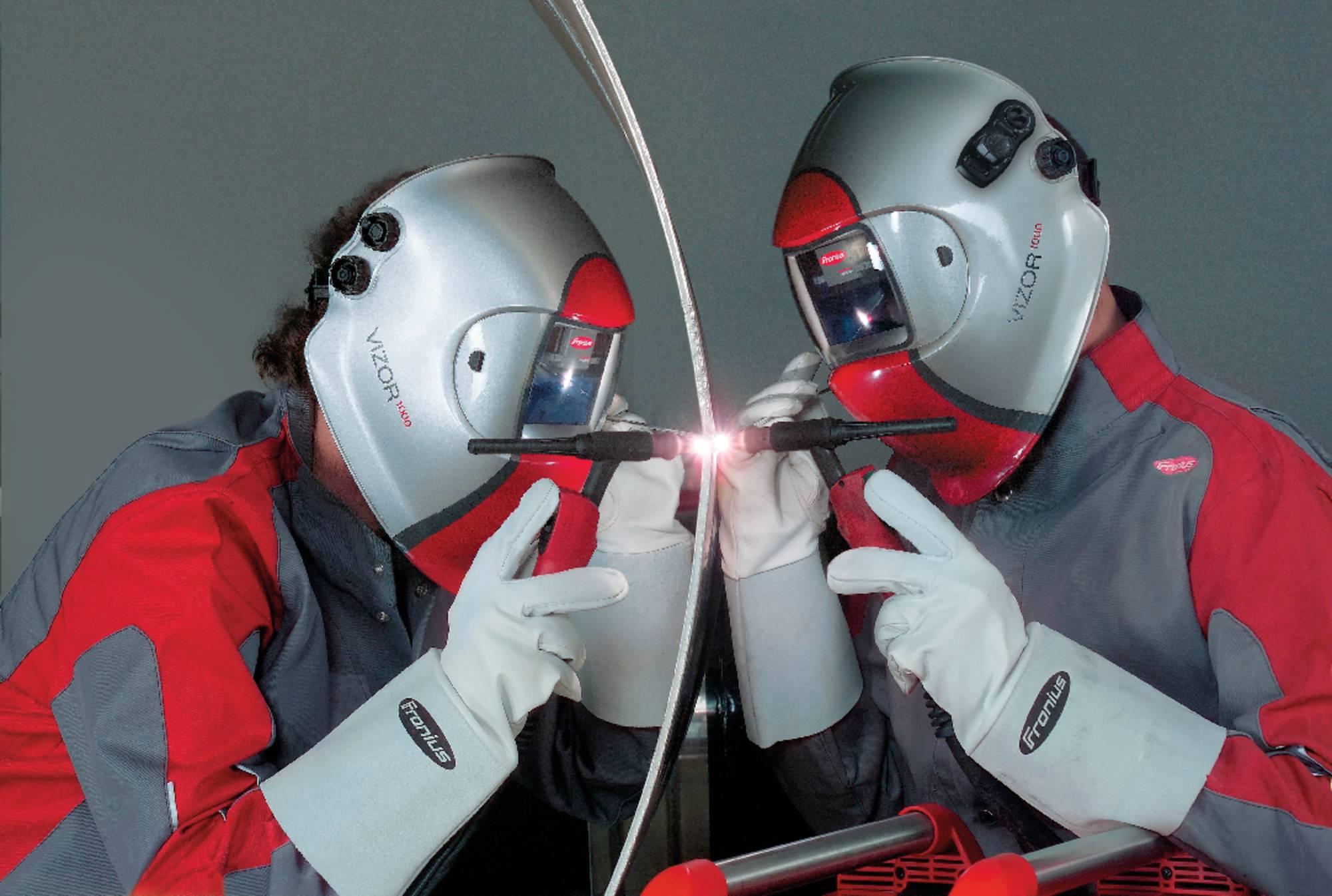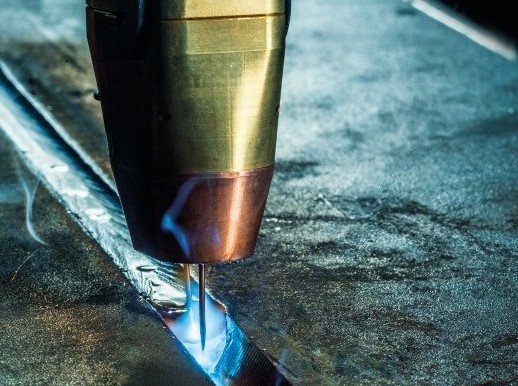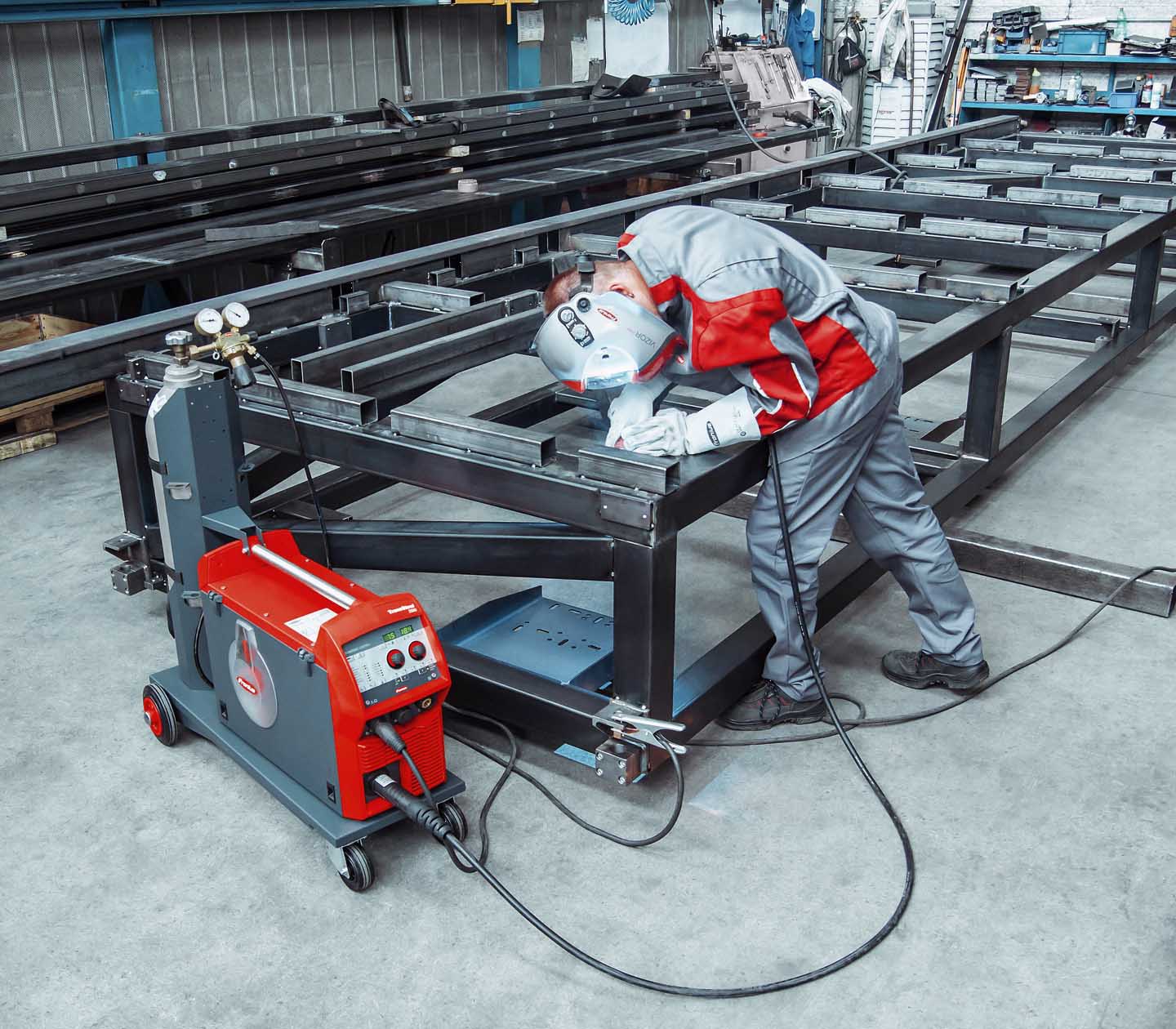Advantages and disadvantages of the pulsed arc compared to the standard arc
Cruising along at high speed on the freeway – in a modern sedan, you feel as if you are simply gliding along rather than putting up a fight against the centrifugal forces. It mirrors the lightness of being, and enables greater distances to be covered with ease. But what would it be like if these driving dynamics and lightness were transferred to country roads or even urban traffic?
In terms of welding technology, the spray arc corresponds to gliding along on the freeway. Its arc properties would be desirable in all power ranges and for numerous applications. However, if welders move into the dip transfer arc or intermediate arc range, depending on the power, then they will suddenly find themselves in urban traffic or back on the country roads. Welding speeds fall, penetration decreases, and any rework that might be needed increases, sometimes enormously, due to welding spatter. It gets complicated. And this is where pulse welding (impulse welding) comes to the rescue…
How the standard arc works – a technical history of pulse welding
If you want to understand the technical principles of pulse welding, first you need to understand how the standard arc variants work. What makes work easier or more difficult?
In general: When the wire electrode touches the workpiece, a short circuit occurs. To avoid a longer short-circuit phase, the current is increased, which causes the arc to ignite. The resulting heat melts the parent material and the wire end – this leads to material transfer, i.e., droplet detachment. In the low to medium power range, each detached droplet is based on a short circuit. However, over the entire power range, the characteristics of the droplet detachment vary greatly:
- Dip transfer arc: In this case, droplet detachment takes place in the high current phase of the respective short circuit. As a result, the short-circuit break, i.e., the arc ignition, is explosive, which can lead to the formation of spatter. However, this is usually so fine in the lower power range that it does not stick to the parent material. Skilled welders can also exert excellent control of the dip transfer arc, as they can constantly feel direct contact with the weld pool.
- Intermediate arc: The principle behind short-circuit-based droplet detachment in the high current phase remains the same in this case too. Since significantly higher amperages are already being used here, the explosions during droplet detachment are also more pronounced. Larger droplets are also formed, which are detached from the wire end without a short circuit and may therefore land next to the weld seam. As a result welding spatter is more frequent as well as larger and inevitably sticks to the workpiece – significantly increasing the amount of rework. For the welder, the intermediate arc can only be mastered with great difficulty.
- Spray arc: When you eventually reach the spray arc range, the wire end is heated up more due to the high power. The droplets are also constricted around the wire end by the magnetic field generated by the current (pinch effect), becoming smaller and smaller as well as more numerous as a result, and are thus directed into the weld pool as if on a thread. The material transfer is then almost short-circuit-free. This results in a super-clean material transfer, especially at high deposition rates, which goes hand in hand with maximum reduction of spatter.
The arc thus gives welders a feeling of extreme balance and easy handling – guiding the arc, and thus joining the metals, feels “super soft”.
The pulsed arc – an electrotechnical trick
The weld properties of the spray arc would be preferable, ideally over the entire power range: super flat, isosceles seams, perfect penetration, low spattering, and of course high welding speeds. However, projecting the whole thing onto the dip transfer and intermediate arc would be impossible in the standard arc range. Instead, a little bit of electrotechnical ingenuity is required… and the result goes by the name of pulse welding.
In contrast to the standard arc, the pulsed arc is ideally short-circuit free. There is therefore no direct contact between the wire and the weld pool. The real secret lies in the oscillation between an extremely low base current and a pulse current – which has very high current values (pulse intervals). Essentially, the base current’s task is to prevent the arc from breaking and to keep the weld pool liquid. The pulse current then generates enough heat to detach the droplet and thus result in penetration.
How exactly does pulse welding work?
Important: Pulsing uses the so-called pinch effect, just like the spray arc. Unlike the dip transfer arc, the droplet is NOT detached in the high current phase. The wire electrode is melted and constricted at a certain point by applying an extremely high current for about one to two milliseconds during the respective pulse. Shortly before the current reaches the range of the low base current again, the constricted droplet is released and glides smoothly into the weld pool. With the appropriate arc length (distance between the wire end and the weld pool), there is never any contact between the wire electrode and the weld pool, which is why impulse welding is virtually short-circuit-free. It thus enables an extremely clean material transfer – exceptions prove the rule.
In addition, as per the spray arc, the droplet size is kept rather small and is approximately the same size over the entire power range, which has a positive effect on the material transfer. Only the number of pulse intervals changes and thus the number of detached droplets, with fewer pulses in the low power range and significantly more in the high power range. This can also be heard: the greater the power, the higher the tone (pulse frequency).
Advantages and disadvantages of pulse welding in practice
- Heat input: The current peaks required for the pinch effect must reach a minimum of 450 amperes. Pulsing is therefore always hotter than standard welding in a dip transfer arc. This is why it is often preferred by welders for light-gage sheet metal in particular, where maximum heat reduction is required. However, the extra heat input can also be perfectly converted into higher welding speeds. Therefore, in certain sheet thickness ranges, the pulsed arc can also increase efficiency.
If, on the other hand, one approaches the spray arc range, the opposite occurs: the pulse makes it possible to reduce the heat input, especially in the high power ranges, since high currents are not permanently applied.
- Disadvantages in handling: Impulse welding is based on the fact that there is no direct contact between the electrode and weld pool. Professional welders therefore talk about the advantages of dip transfer arc handling, as the continuous contact allows for better guidance of the weld pool and prevention of undercuts.
- Reduction of welding spatter: It is clear to see – welding spatter is reduced by up to 100 percent due to the short-circuit-free droplet detachment and the resulting extremely clean material transfer. Pulse welding is therefore highly advisable in the intermediate arc range in particular as it saves an incredible amount of rework.
- Always the same type of arc: From minimum to maximum power, the same type of arc can always be applied using the pulse function.
- Advantageous for multirun welding technology: Impulse welding is perfectly suited for layer build-up.
- Guaranteed flat seams
Particularly advantageous for aluminum
For users that work in the field of professional aluminum welding, a MIG/MAG pulse welder is simply indispensable. A special effect can be observed here: the dip transfer arc is often too cold due to aluminum’s high thermal conductivity. In practice, this means that welders have to configure a significantly higher welding current (wire speed) with the DTA compared to the pulse arc. This makes it much more difficult to select a suitable welding parameter. If the welding is too “cold”, the result is a seam with considerable weld reinforcement. If, on the other hand, a welding parameter that is too high is used, it results in excessive penetration (waste of filler metal).
Pulse welding can therefore help with aluminum applications, especially in the lower power range. Due to the adapted pulse characteristics, it is easy to avoid burn-through and excess penetration and at the same time to achieve a clean outflow of the molten mass for a concave seam appearance (curved inwards). A further advantage of the pulsed arc on aluminum is its cost effectiveness due to higher welding speeds and the particularly spatter-free welding results across the entire power range. The visual results are flawless and highly professional.
The right MIG/MAG pulse welding machine
The pulsed arc has been state of the art for decades in the highest quality welding systems. But impulse welding is also rapidly gaining ground even in the mid-range segment of manual welding systems. Fronius has also responded to this market development and has added this function to the multi-process devices from the TransSteel series.
The new TransSteel Pulse thus features all the technology needed to meet all the welding challenges in the manual welding sector, regardless of the material.
 Perfect Welding Blog
Perfect Welding Blog




No Comments